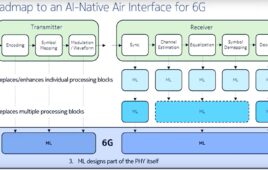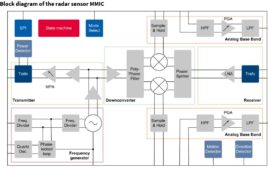Scientists of Institute of Physics, Nanotechnology and Telecommunications of Peter the Great St. Petersburg Polytechnic University (SPbPU) and collaborators have established an international consortium to increase the accuracy of optical radar.
An optical radar is a device for estimating distance, consisting of an emitter that transmits an optical signal (for example, a laser beam); a receiver that catches the signal reflected by objects around the radar; and a data processing system that creates the picture of the surrounding landscape based on the specific differences and delay times between the outgoing and incoming signals.
Earlier studies from SPbPU with colleagues from Moscow Institute of Electronic Technology and University of Oulu increased the accuracy of optical radars nearly ten-fold. These results were achieved by applying shorter optical pulses of about one nanosecond in duration for the scanning procedure.
Reducing the pulse length while maintaining its power can significantly improve its accuracy. The typical indicators in similar devices are 30 to 40 V / 3-5 ns, while the device created in SPbPU demonstrates 40V / 1 ns; this is a notable achievement. The device has broad applications including shipbuilding, automobile and aircraft manufacturing, optical detection and electronic equipment.
The aim of the scientific consortium is to continue improving the characteristics of the optical emitter to increase the radiating power, the pulse repetition rate, and the transition to the sub-nanosecond scale.
In mid-January, a seminar held in St. Petersburg brought together the representatives of the Leibniz University of Hanover, the University of Oulu and Peter the Great St. Petersburg Polytechnic University. Its purpose was the joint development of a new approach to the design and implementation of a unique avalanche switch, the heart of the high-speed transmitter. The basic fundamentals have been described in an article published in the IEEE Transactions on Electron Devices.
“New technological solutions are required to make the pulse shorter with higher power, because now we are faced with some physical limitations. The shorter pulses can’t be obtained with the properties of semiconductors currently used. Therefore, we should not just concentrate on development of purer semiconductors of thinner layers, but a drastically new approach,” says Dr. Alexey Filimonov of SPbPU.
In order to obtain the output parameters according to newly developed theoretical approach, it is necessary to develop a bipolar avalanche transistor that provides high-speed avalanche switching with lower heat loss. It is difficult to implement this idea technologically, so the Institute of Microelectronic Systems of Leibniz University of Hanover will provide the equipment and expertise required to carry out the processes of development of new unique switch.
Technological implementation and experimental study of the device were taken at the University of Oulu, Moscow Institute of Electronic Technology and Peter the Great St. Petersburg Polytechnic University. Currently, the equipment is almost assembled for the metrological study, which will be held at SPbPU. Leibniz University of Hanover will provide technological support for the development of a silicon switch with a drastically increased frequency of repetition, which should significantly improve the accuracy and reduce measurement time.




